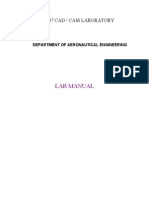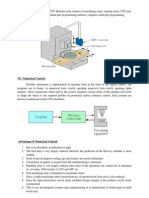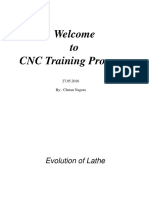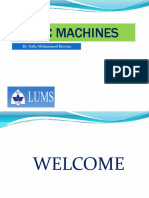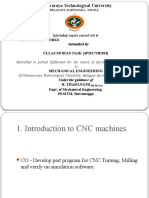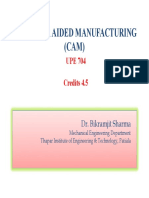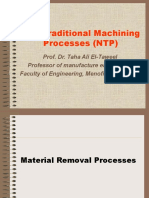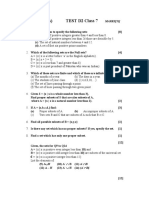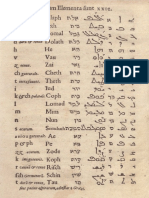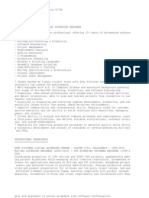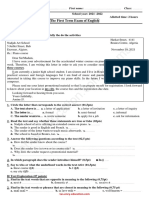0% found this document useful (0 votes)
114 views4 pagesQuestions
The document discusses two topics:
1) Mirror image function in CNC programs uses G51 and G50 codes to turn mirroring on and off for machining symmetrical parts. An example is given showing G51 to enable mirroring followed by lines of code and G50 to disable it.
2) Parametric programming allows specifying axis positions, feeds, and speeds with variables, arithmetic, and logic like in programming languages. Features like holes and slots can be programmed as reusable modules called for different parts, eliminating redundant programming.
Uploaded by
Osama MohammedCopyright
© © All Rights Reserved
We take content rights seriously. If you suspect this is your content, claim it here.
Available Formats
Download as PDF, TXT or read online on Scribd
0% found this document useful (0 votes)
114 views4 pagesQuestions
The document discusses two topics:
1) Mirror image function in CNC programs uses G51 and G50 codes to turn mirroring on and off for machining symmetrical parts. An example is given showing G51 to enable mirroring followed by lines of code and G50 to disable it.
2) Parametric programming allows specifying axis positions, feeds, and speeds with variables, arithmetic, and logic like in programming languages. Features like holes and slots can be programmed as reusable modules called for different parts, eliminating redundant programming.
Uploaded by
Osama MohammedCopyright
© © All Rights Reserved
We take content rights seriously. If you suspect this is your content, claim it here.
Available Formats
Download as PDF, TXT or read online on Scribd
/ 4














